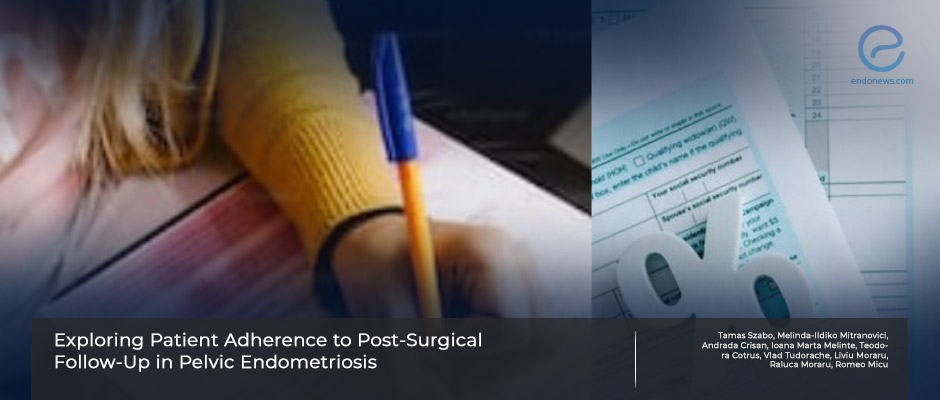The compliance for post-surgical follow-ups after endometriosis surgery
Aug 25, 2023
Follow-up compliance may measure patient dissatisfaction
Key Points
Highlights:
- Personalized management is crucial for endometriosis, and surgery remains an important therapeutic option.
Importance:
. The improvement of pain symptoms in patients after endometriosis surgeries remained unclear due to a lack of follow-ups.
What's done here:
- A Romanian team retrospectively analyzed 1, 3, 5, and 7 years of follow-up data of 2538 surgeries, performed in ten years.
- All data of women were with histologic confirmation, and incomplete questionnaires were excluded.
- The primary aim was to evaluate the patient's participation in follow-ups.
- The change in the quality of life, fertility, pain complaints, and disease recurrence were determined as secondary goals.
Key Results:
- Out of a total of 2538 women, only 356 completed the entire follow-up schedule.
- Those patients who answered the questionnaires before, and 1 year after surgery formed Group A, which was composed of 445 patients.
- Group B included 528 patients who answered the questionnaires before and more than one year after the surgery.
. Regardless of age, dysmenorrhea and pelvic pain are common symptoms of patients that were not generally improved.
. Comparing group A to group B, no difference was determined in pregnancy desire, primary or secondary infertility rates, and improvement in general postoperative symptoms, including health and physical conditions.
. Comparing pain improvement to two groups showed it was significantly lower in Group A, who disappeared after filling the first postoperative follow-up form.
. Noticeably, more patients who completed the questionnaires after surgery were diagnosed with stage IV rAFS endometriosis.
Lay Summary
. The patient's adherence to follow-ups after surgery is essential as it is the only way to evaluate the surgery's benefits in improving pain symptoms and recurrences, measuring the quality of life, and fertility outcomes.
. Dr. Szabo and his team from the University of Medicine, Pharmacy, Science and Technology, Targu Mures, Romania, aimed to determine the postoperative outcomes of endometriosis patients by examining the follow-ups retrospectively using the electronic database of the Cirendo database, which compromise 15 institutions.
. Cirendo database is a progressive cohort under the North-West Inter-Regional Female Cohort for Patients with Endometriosis funded by Group 4. ( University Hospitals of Rouen, Lille, Amiens, and Caen in France. )
. Surgeons filled in intraoperative findings and immediate postoperative management using questionnaires while postoperative 1, 3, 5, and 7-year self-questionnaire follow-ups addressed patients, including questions related to endometriosis symptoms and fertility outcomes.
. Data collection between June 2009 and June 2019 showed that most patients quit the postoperative follow-ups and disappeared from the system. Almost one-fifth of them filled out the questionnaire forms for the postoperative first and third years.
. The authors found that complaints of pain were more pronounced among those who disappeared after the first follow-up. The authors interpreted the significant lack of filling the addressed questionnaires as attributed to patient dissatisfaction.
. This study was recently published in Medicana.
Research Source: https://pubmed.ncbi.nlm.nih.gov/37512022/
laparoscopy diagnosis management follow-up adherence chronic pelvic pain malignancy endometriosis.

